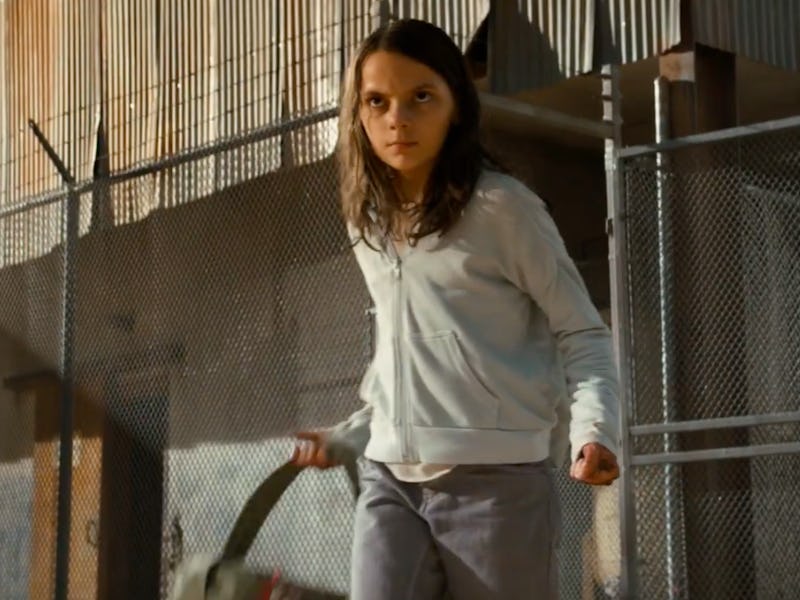In both Logan trailers it’s revealed that doe-eyed Laura is a badass with regenerative powers akin to her clone papa, Wolverine. But it’s just in the red band trailer that we hear Logan utter the only words applicable to seeing an 11-year-old front-flip her way into stabbing a solider with retractable claws: holy fuck.
The trailers confirm that the film echoes the comics in having Laura be Logan’s clone — meaning that her mutant ability is her superpower of regenerating damaged cell structure at an incredible rate, coupled with enhanced ability and reflexes. Her adamantium claws aren’t a part of her biological makeup — but we’ll have to see if she was forced into an unbreakable skeleton at the hands of a secret organization like Logan. Where she differs most is in the most obvious and important way: age.
In Logan, a scarred and bloody Wolverine is somewhere around 200-years old; his ability to heal has slowed down considerably. Meanwhile, Laura walks away from a fight with just bloodstained knuckles. Real life biology means that her mutant regeneration powers are far better than Logan’s.
Looks like Laura has two claws instead of three.
Researchers believe the reason that wounds heal faster the younger you are is because of a specific protein called Lin28a, which exists in all complex organisms. In embryonic cells where the protein is fully activated, Lin28a becomes more and more dormant as the organism ages.
In a 2013 paper in Cell, a team of researchers explain that this is the gene that holds the key to regeneration. They found that after genetically modifying mice to keep producing Lin28a into adulthood, the mice developed specifically Wolverine-like powers. Puncture wounds in their ears healed rapidly and almost completely, while their hair grew faster than normal. But they did find one oddity in a particularly cringe-worthy procedure: When they clipped off the toe tips of young mice, the toes grew back. But when they removed the toe tips of older mice, who still had the Lin28a protein, they did not grow back.
This demonstrated that while Lin28a can make older tissue act like young tissue in all mice equipped with the protein, it was only young mice that could actually regrow a body part.
Back to Logan and Laura: Their mutated genes are a lot like having lifelong, amped up Lin28a coursing through their bodies. But Logan is a lot like an old mouse with its toes cut off — his body just can’t repair itself like it could in its youth. Laura will be stronger and more agile, and it has more to do with biology than anything.
